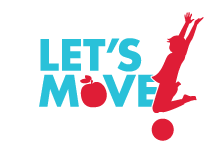Child Nutrition Programs
Overview
More than 31 million children participate in the National School Lunch Program (NSLP) and over 11 million participate in the School Breakfast Program (SBP). Today, many children are consuming most of their daily calories at school and for many children, food served at school may be the only food they eat regularly.
The Food and Nutrition Service, part of USDA, administers the program at the federal level, while state agencies, generally state departments of education, operate the program through agreements with local school food authorities.
The NSLP provides nutritionally balanced lunches to children each school day in over 101,600 public and nonprofit private schools and residential childcare facilities. The program reaches more than half of all children enrolled in the nation's schools. The program also reimburses schools for snacks served to children in after-school educational and enrichment programs.
The SBP provides nutritious breakfasts to more than 87,000 public and non-profit private schools and residential childcare institutions each school day. About 87% of the schools that participate in the NSLP also participate in the SBP. The SBP provides school children of all economic backgrounds with a well-balanced, healthy meal at the beginning of the school day.
Schools are required to serve lunches that meet the Dietary Guidelines for Americans and provide minimum calorie levels, and one-third of the Recommended Dietary Allowances of protein, vitamin A, vitamin C, iron and calcium. Visit the Dietary Guidelines website for more detailed information.
Financial Information
Schools participating in the NSLP and SBP receive reimbursement for each meal served. Reimbursement rates are based on the number of free, reduced price and paid lunches served in the school. Children from low-income families (at or below 130% of the Federal Poverty Level (FPL), or $28,665 for a family of four in school year 2010 - 2011) are eligible for free meals. Those with incomes up to 185% of the FPL are eligible for reduced price meals.
For the NSLP, the cash reimbursement rates for School Year 2010 - 2011 are $2.72 for free lunches, $2.32 for reduced price lunches and $0.26 for paid lunches. As ways to enhance school meals are considered, it must be kept in mind that, on average, school districts spend roughly half of this reimbursement on non-food costs like labor and equipment. For more information on reimbursement rates, visit the website www.fns.usda.gov/cnd/Governance/notices/naps/NAPs.htm.
For the SBP, cash reimbursement rates for School Year 2010 - 2011 are $1.48 for free breakfast, $1.18 for reduced price breakfast, and $0.26 for paid breakfast.
Additional School Meal Programs
Summer Food Service Program
The Summer Food Service Program (SFSP) is the single largest Federal resource available for local sponsors who want to combine feeding and summer activity programs. Summer meals help more than 2.1 million children eat healthy and stay active during the summer months. Children participating in summer programs are served the nutritious meals and snacks they need to maintain a healthful diet when school is out. The SFSP is reaching only a fraction of the children who rely on free or reduced price meals during the school year. With the help of more community and faith-based organizations, the program can reach more needy children.
Team Nutrition
Team Nutrition is an initiative of the USDA Food and Nutrition Service to support the Child Nutrition Programs through training and technical assistance for foodservice, nutrition education for children and their caregivers, and school and community support for healthy eating and physical activity. Team Nutrition’s website offers free nutrition education curricula, posters, brochures and other resources to schools. The Team Nutrition’s resource library is a comprehensive listing of all the resources available through Team Nutrition to schools and childcare facilities that participate in the Federal Child Nutrition Programs.



